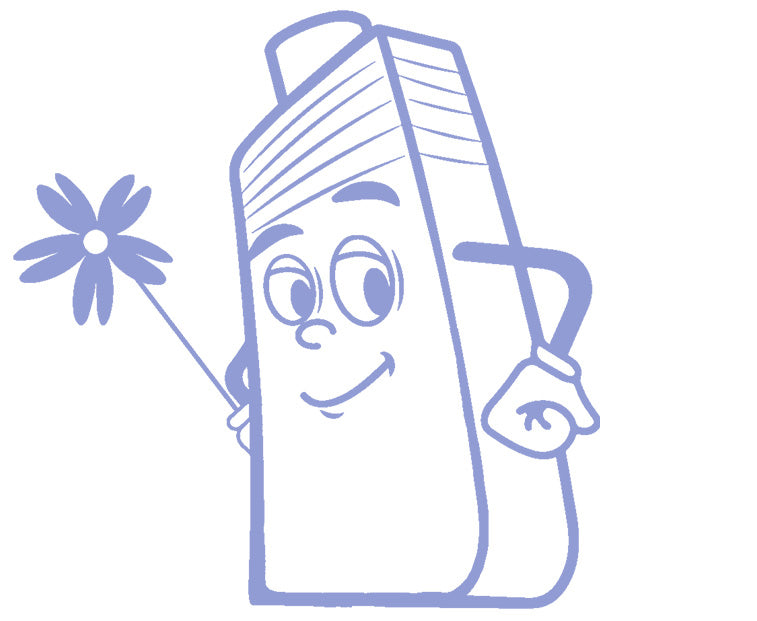Alopecia areata, also known as spot baldness, is an autoimmune condition that often results in hair loss from some or all areas of the body. Though the hair loss from alopecia areata is usually not permanent, the condition itself doesn’t have a cure. However, some alopecia treatments may help hair grow back more quickly.
Keep reading to learn more about alopecia, alopecia regrowth, and what alopecia areata treatment options are available to you.
Index
What is Alopecia Areata?
Alopecia areata is a common autoimmune disorder that causes unpredictable, patchy hair loss. The immune system protects the body from foreign invaders like bacteria and viruses, but people with alopecia have immune systems that mistakenly attack their hair follicles, which leads to hair loss.
Luckily, hair loss from alopecia areata is not permanent. Since the hair follicles are not destroyed, there is a possibility to regrow hair with proper treatment (more on alopecia regrowth later).
Though the hair loss from alopecia areata is usually not permanent, the condition itself doesn’t have a cure. However, some alopecia treatments may help hair grow back more quickly.
Types of Alopecia
Alopecia areata only affects the scalp and appears as small, smooth patches of hair loss. In some cases, these bald spots spread until all hair on the scalp is lost. This condition is known as alopecia totalis. The hair loss can also spread to the body in a condition called alopecia universalis.
No need to freak out just yet! Most cases of alopecia do not advance to alopecia totalis or alopecia universalis. While alopecia areata is somewhat common, alopecia totalis and alopecia universalis are very rare.
Fast Facts on Alopecia Areata
- Alopecia areata affects nearly 2% of the general population at some point during their lifetime
- According to Alopecia UK, four out of five affected people experience alopecia regrowth within one year of hair loss without any alopecia areata treatment.
- 20% of people with alopecia areata have a family member with the same condition.
- There is no cure for alopecia areata.
When Does Alopecia Areata Usually Begin?
Alopecia areata hair loss can occur at any age and affects all races and genders. However, most cases occur before the age of 30. For this reason, alopecia areata is often associated with children and teens.
Alopecia areata can also reoccur after alopecia regrowth. For many people, recurring cases of alopecia are something they struggle with for the rest of their lives. For other people, the condition never returns after alopecia regrowth.
What Causes Alopecia Areata?
It’s thought that alopecia areata is linked to genetics. According to Alopecia UK, about one in five people with alopecia has a family member with the same condition.
Since alopecia areata is an autoimmune condition, people with alopecia are also more likely to have family members with other autoimmune conditions like psoriasis, asthma, allergies, and lupus.
However, scientists aren’t sure what triggers this auto-immune response. Some people with alopecia areata believe that stress is a trigger, but there is no clinical evidence that this is true for all cases of alopecia.
Alopecia areata is not contagious and isn’t linked to any vitamin or mineral deficiencies.
A healthy diet and life style can make a huge difference to normalise the hair growth cycle.
Signs & Symptoms of Alopecia Areata
If you’re wondering if you have alopecia areata, these are some of the signs and symptoms to look out for:
1. Circular or Patchy Bald Spots

Coin-sized patches of hair loss are the classic symptom of alopecia areata. Alopecia typically starts as a small, smooth bald spot on the scalp. This hair loss can remain patchy or spread until all scalp hair is lost.
2. Tingling

Some alopecia sufferers experience a slight tingling sensation on the scalp.
3. Significant Hair Loss in a Short Period of Time

Unlike androgenic alopecia (another common form of hair loss which occurs very slowly – think receding hairline), alopecia areata causes visible hair loss quite rapidly.
4. Total Loss of Hair on Scalp

In some cases, alopecia can advance beyond patchy hair loss. This form of hair loss is referred to as alopecia totalis.
5. Full-body Hair Loss

In cases of alopecia universalis, all body hair can fall out. This means that it can affect even your eyebrow and eyelash growth.
Diagnosis & Treatment of Alopecia Areata
If you’re noticing patchy hair loss, make an appointment with your dermatologist. Remember, the less hair loss that occurs, the more likely you’ll be to experience full regrowth.
Your doctor may be able to diagnose you with alopecia areata just by looking at your hair loss, but more information, such as family history or blood tests, may be required for alopecia areata treatment.
While there is no cure for alopecia, your dermatologist can offer alopecia areata treatments like steroid creams and injections to help with symptom management. However, there is no guarantee that these alopecia areata treatments will work for alopecia regrowth.
But don’t despair! In many cases, alopecia regrowth occurs on its own without alopecia areata treatments. Alopecia regrowth takes place over the course of a few months or even years. Sometimes hair grows back white, especially in the first instance of alopecia hair loss.
The chances of alopecia regrowth occuring are better with less initial hair loss, so don’t wait to visit your doctor if you are noticing symptoms of alopecia.
7 Tips for Alopecia Regrowth
Besides visiting your dermatologist for medical alopecia areata treatments, you can try some of these tips and products. Just note that although some of these methods may help with alopecia regrowth, they cannot prevent the formation of new bald patches.
1. Take Hair Growth Supplements

As we mentioned before, there is no known link between vitamin deficiencies and alopecia. However, taking a hair growth supplement like these can certainly help make sure your hair is growing as efficiently as possible. With a hair-loving combination of Biotin, Vitamin C, Vitamin E, Zinc and Folic Acid, these hair growth supplement have everything your hair follicles need to optimize their growth. Plus, they're available as gummies that taste good and are sugar free!
2. Use a Gentle Shampoo & Conditioner

The products you use to wash your hair may be contributing to alopecia areata, so limiting the inflammatory response from your body by reducing your exposure to harsh chemicals could be another alopecia areata treatment. Many shampoos and conditioners are loaded with ingredients that are known to irritate sensitive skin.
Instead, choose a shampoo and conditioner made with natural growth-promoting ingredients, like the organic certified Grow Perfect™ Duo from Hairlust. Not only do this shampoo and conditioner offer more gentle solutions for cleansing but they also nourish hair with a unique combination of proven hair growth ingredients, like Anagain™ and rosemary oil.
Does a shampoo for hair loss really work? Learn more in our blog.
3. Boost Scalp Circulation

Another alopecia areata treatment to consider is boosting blood flow to the scalp. Why? Because blood brings the vitamins and minerals that you eat into your hair follicles—more blood to your follicles means they’ll receive more of the nutrients they need to grow healthy, new hair.
One way to boost your scalp circulation is by massaging your scalp with your fingers regularly. Applying mint oil can also help boost scalp circulation, which is why I recommend the organic Grow Perfect™ Thickening Spray and Scalp Delight™ Detox Scrub from Hairlust. Using the Grow Perfect™ Thickening Spray can improve the health of your scalp and give instant volume to thinning hair. The Scalp Delight™ Detox Scrub removes buildup from sebum, hair products, and hard water, which can also make hair look fuller.
4. Reduce Stress

Some anecdotal evidence indicates that stress can be a factor in flare-ups of alopecia areata, so one alopecia areata treatment may be reducing your stress levels. There are many ways to relieve stress and anxiety, so you’ll have to experiment and find out what works best for you. Here are some ideas to get you started:
- Journaling
- Yoga
- Aromatherapy
- Meditation
- Playing or listening to music
- Arts & crafts
- Exercise
- Spending time outside
- Playing with pets
- Acupuncture
5. Wear Sunscreen

One of the main biological functions of your hair is to protect your scalp from sun damage. With alopecia areata hair loss, your scalp may be exposed to UV radiation, which can not only increase your risk of developing skin cancer but can also make it more difficult for alopecia regrowth to occur.
To protect your scalp, wear sunscreen like Sun Defense Hair Mist or a hat whenever you’re outside for long periods of time.
6. Eating an Anti-Inflammatory Diet

Sugary foods, alcohol, and processed foods can trigger an inflammatory response in the body. Some people also believe that cutting out common food allergies like nuts, gluten, and dairy can help reduce the immune response in your body. Thus, following an anti-inflammatory diet with little added sugar and zero alcohol might also act as an alopecia areata treatment.
It can be difficult to make big changes to your diet, so if you’re considering this alopecia areata treatment, start by making small changes gradually. Over time, you may be able to isolate which foods are triggers for you.
Additionally, you should try to incorporate foods into your diet that are known to have anti-inflammatory properties. Anti-inflammatory foods include green leafy vegetables, berries, turmeric, broccoli, ginger, coconut oil, wild-caught salmon, and bone broth.
There is no guarantee that eating an anti-inflammatory diet will work as an effective alopecia areata treatment, but it certainly can’t ever hurt to eat healthy foods!
7. Essential Oils

Some essential oils are known to have anti-inflammatory properties that may work as an alopecia areata treatment. Lavender oil might be especially helpful for encouraging hair growth. In a 2016 study, topical application of lavender oil increased the number and depth of hair follicles. Lavender oil also promotes relaxation and feelings of calmness, which may help reduce stress. Rosemary is another essential oil that’s thought to aid hair growth. A 2015 study indicated that rosemary oil was effective in encouraging hair regrowth. Using one or both of these essential oils while massaging your scalp could help with alopecia regrowth.
However, some people are very sensitive to essential oils. To be safe, always mix essential oils with a carrier oil like coconut oil. Test a small amount of the mixture on your inner arm before applying to your scalp to make sure you won’t experience a reaction. When it comes to your scalp, better safe than sorry!
Alopecia Areata - FAQs
-
1. What is alopecia areata?
Alopecia areata is an autoimmune disorder characterized by patchy hair loss due to the immune system mistakenly attacking hair follicles.
-
2. Is alopecia areata permanent?
While the hair loss from alopecia areata is usually not permanent since the hair follicles are not destroyed, the condition itself doesn’t have a cure.
-
3. What causes alopecia areata?
While the exact cause is unknown, genetics play a role, and individuals with alopecia areata may have family members with other autoimmune conditions.
-
4. How is alopecia areata diagnosed and treated?
Diagnosis involves examination by a dermatologist, sometimes supplemented with family history or blood tests. Treatment options include steroid creams, injections, and other medical interventions.
-
5. Are there lifestyle changes or products that can help with hair regrowth?
Hair growth supplements, gentle hair care products, scalp massages, stress reduction techniques, sunscreen use, anti-inflammatory diet, and essential oils are suggested for promoting regrowth.
If you have alopecia areata, you’re certainly not alone. However, any kind of hair loss can be very distressing. That’s why many people with alopecia areata and other types of hair loss seek the help and company of a support group.
We hope that you find this post helpful! If you’ve experienced alopecia areata and found an alopecia areata treatment that worked for you, we’d love to hear from you!






















































